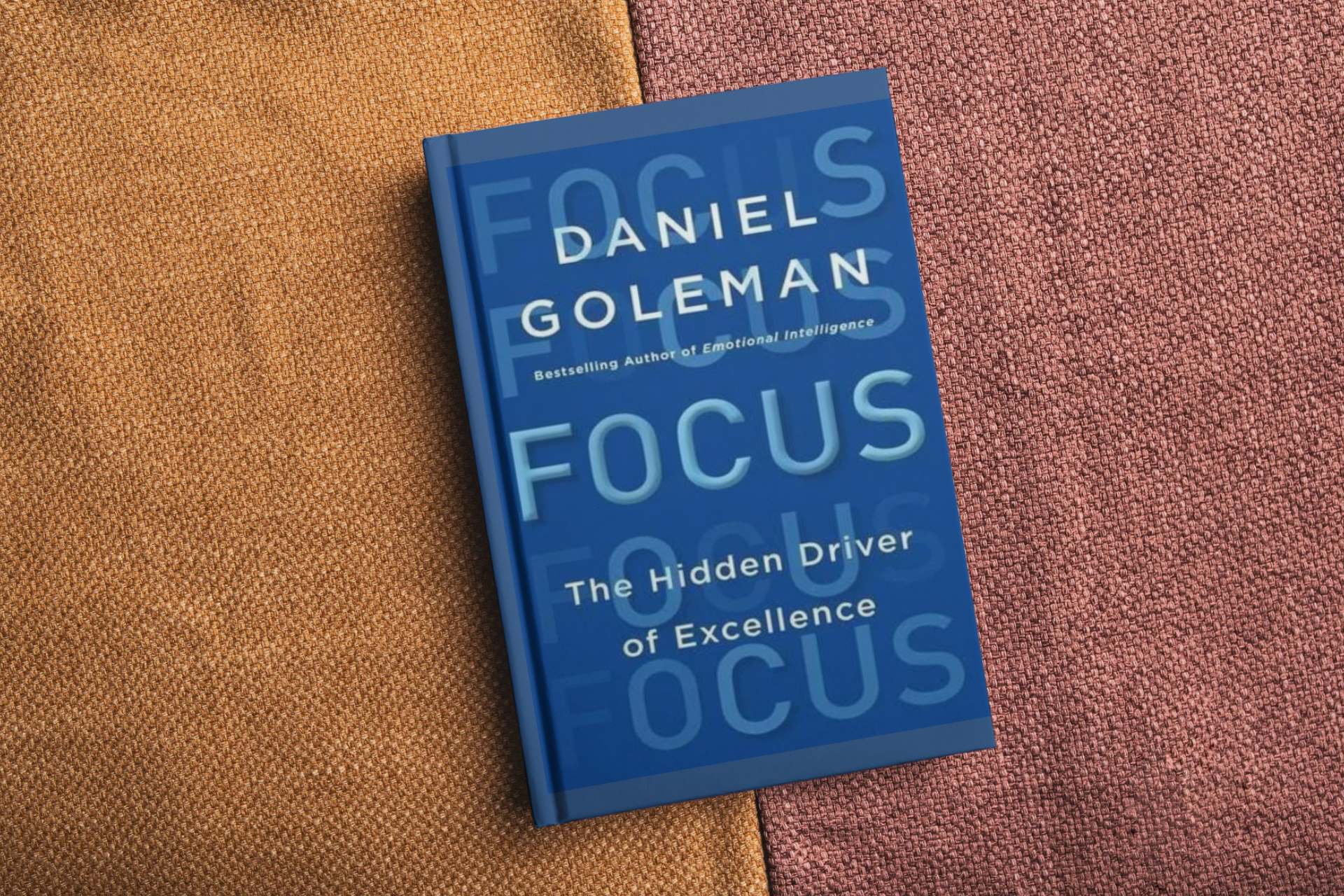In Focus: The Hidden Driver of Excellence, Daniel Goleman spotlights the importance of focus and its role in the quality of our lives. He explains that there are three types of focus: inner, other, and outer. Living a fulfilling life requires mastering these three types.
Before discussing the three types of focus, we need to discuss a few things.
Attention and Distraction
Very similar to a muscle, attention can weaken if you don’t use it properly. But it can also grow if you practice.
A wealth of information creates a poverty of attention. Your well-being may depend on being able to disengage your attention from one thing and direct it to another. This goes against the idea of multitasking. There are two main varieties of distractions:
- Sensory distractions: these can be noises, colors, smells, discomfort, and anything that can be captured by your senses. Examples of this include working in a noisy office or trying to read a book in a library while a group of people is having a loud chat. Generally, these distractions are easier to handle.
- Emotional distractions: these are distractions that are harder to handle and include a variety of emotions. It is hard to concentrate, for example, if you had a bad day at work or had a fight with a coworker.
Goleman explains that focus can help us avoid distractions by entering a flow mode. A flow is when we are fully focused on a task that requires increasing our attention. Tasks that can help you enter a flow mode are generally challenging to your abilities but still manageable. If you have ever worked on a demanding task, you may have felt this state of flow.
Two Minds: Top-Down and Bottom-Up
Every person has two minds – each with a purpose. The top-down is the one we use when we focus on novel tasks. The bottom-up is the one that is unconsciously used for routine tasks.
- The top-down mind:
- slower
- voluntary
- effortful
- the source of self-control
- for learn new things
- The bottom-up mind:
- slower
- involuntary
- where intuition comes from
- impulsive and driven by emotions
- executes habits
- always on
The bottom-up mind evolved over millions of years to act quickly. This helped us survive when threats were imminent and there was no time for thinking. On the other hand, the top-down mind evolved later and was responsible for deliberate thinking.
As you learn new habits, the tasks become routine and the top-down mind hands over the control to the bottom-up mind. Hence, this is why you feel less need to pay attention the more you practice.
A good example of this is driving. In the beginning, you pay extra attention to your movements. After a while, driving becomes an effortless activity as the bottom-up mind takes control of the tasks.
The bottom-up mind also never stops learning as you are going through the day. It processes information and acts as a rudder in life – sometimes this can be bad or good. This is where gut feelings come from.
Emotions can hijack our bottom-up minds and drive our focus when our minds are wandering, distracted, or overwhelmed. This is why we have better chances of making good decisions when we are focused and not overwhelmed. The good news is we can also control our emotions with the top-down mind.
The Wandering Mind and Restoring Focus
When you are not focused on a task or a thought, the mind wanders. This is where the magic is: it often wanders towards unresolved issues and personal concerns. The bottom-up mind keeps working on issues even when you are not consciously thinking about them.
Solutions to issues surface from the bottom-up mind and we realize them as the “aha!” moments. This is why it is sometimes important to let your mind wander. You need to have open time to allow for creativity through the bottom-up mind.
Goleman mentions that tight schedules tend to kill this creativity. Why? Because the mind gets fatigued from always focusing tightly, and then we reach cognitive exhaustion. This becomes apparent through loss of effectiveness and being increasingly distracted and irritable.
To restore focus, Goleman mentions that we need to unplug regularly. The quiet time from unplugging restores our focus. The quiet time needs to be preferably spent in relaxing environments where demands for attention are low. You don’t want to spend quiet time surfing the web or checking e-mails.
By default, your brain wants to use the bottom-up mind to save energy.
Let’s now discuss the three types of focus that Goleman introduced: inner, other, and outer.
Inner Focus: Self-Awareness
To make good judgement, you first need to be aware of yourself. The more self-aware you are, the better you know yourself and the better you can make deliberate decisions to divert your attention to what is important.
A good measure of self-awareness is the gap between how you perceive yourself and how others view you. The smaller the gap, the better your self-awareness is.
Sometimes, we act in certain ways that we think are proper but are perceived differently by others. We are indeed oblivious to a lot of things we do. This is why it helps to ask close people around you for feedback.
Closing the gap between how you perceive yourself versus how others see you can improve your chances of going up the organizational ladder.
As mentioned above, understanding yourself can help you control your impulses and direct your energy to what you truly want.
Other Focus: Awareness and Ability to Read Others
You can improve your ability to read others through empathy – the capacity to understand what others are going through. Goleman brings up three types of empathy:
- Cognitive empathy: This allows you to understand what the other person is feeling and helps you assess their emotions while maintaining control of your own emotions. This is a top-down process (deliberate).
- Emotional empathy: You feel what other people are feeling before you think about the situation. This is a bottom-up process and we do it before thinking.
- Empathic concern: This requires both, the bottom-up and top-down minds. Empathic concern encourages you to care for others and, if needed, to step in and help make the situation better.
Having empathic concern enables you to read and connect with others while maintaining control of your emotions.
Outer Focus: Awareness of Big Picture Systems
Goleman explains that brains evolved to pick up immediate threats, such as connecting the sound of a rustling brush with a predator lurking behind. However, brains didn’t evolve to easily connect short-term actions with long-term results. Goleman calls this system blindness.
Most of the time, we are unable to sense the threat of long-term issues and have difficulty comprehending system interactions. This is why most of our short-term solutions end up exacerbating issues in the long run.
A good example of this is traffic congestion. The apparent solution is to build more roads and widen existing ones. However, people may be tempted to relocate farther away, purchase more vehicles, and take more trips. This can make the situation worse in the long-term.
To help think farther into the horizon, it is good to concentrate on the positive emotions and good aspects of our behavior – preferably aspects for which positive results can be seen now.
Leadership
Good leaders can harness all three types of focus: inner, other and outer. They are self-aware and tend to be good system thinkers, see the big picture, and are emotionally intelligent.
They are also aware that our energy to focus has a limit, so they direct this energy towards what is more important.



